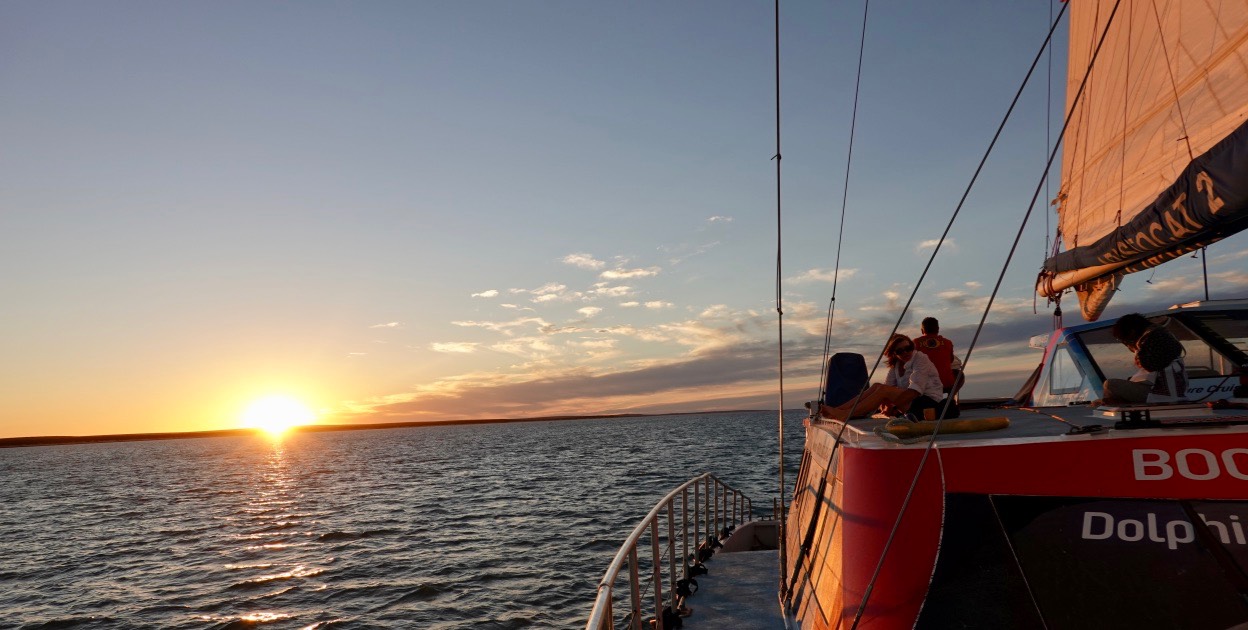 From the luxury of the Kalbarri caravan park with ensuite bathrooms we stayed last night in the dusty backyard of a roadhouse. The stay was free and we slept well in spite of the intermittent crescendo and decrescendo of passing trucks.
From the luxury of the Kalbarri caravan park with ensuite bathrooms we stayed last night in the dusty backyard of a roadhouse. The stay was free and we slept well in spite of the intermittent crescendo and decrescendo of passing trucks.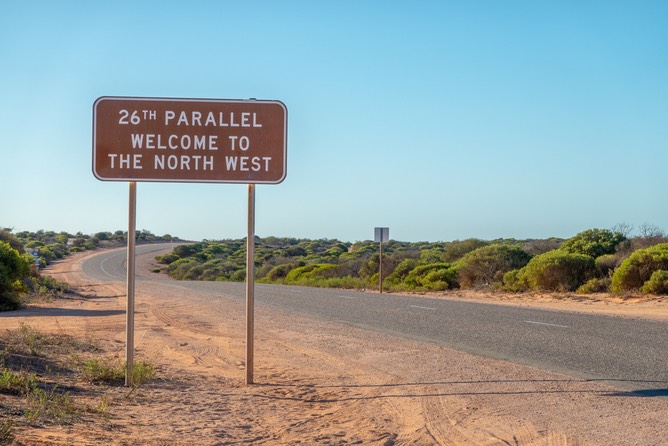
As a matter of fact it was the first night that we slept with all windows ajar and without a blanket! The next morning driving down Shark Bay Road we crossed the 26th parallel, so we are close to the tropics and at the heights of the border between South Australia and Northern Territory further East.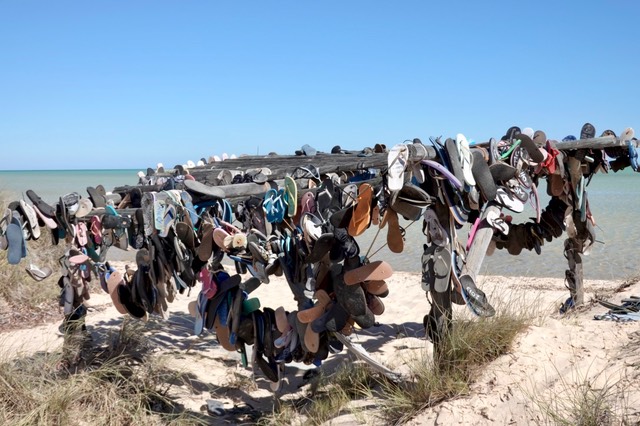
Shark Bay is a World Heritage listed. It is a Marine Nature Reserve and is surrounded by several National Parks. The bay was named in 1697 by the English explorer William Dampier after exclaiming: ”There a bloody lot of sharks here!". However, he was not the first European visiting the area. In 1616 Dutchman Dirk Hartog was the first man to hammer a stake into Australian soil just at this very coast. The stake was quickly removed when the English took possession, and so it happened that our national foot wear is not "the clog” but "the thong”!
At Denham beach we even found a monument dedicated to this marvel of foot wear fashion! As it is, many a thong gets lost, thrown or stuck in the sand - nothing to do with being washed up from shark victims, as there has been no recorded shark fatality here since white men arrived. So some genius nailed an inscribed thong onto a sign post and started a fad much like the one in Europe of putting padlocks on bridges.
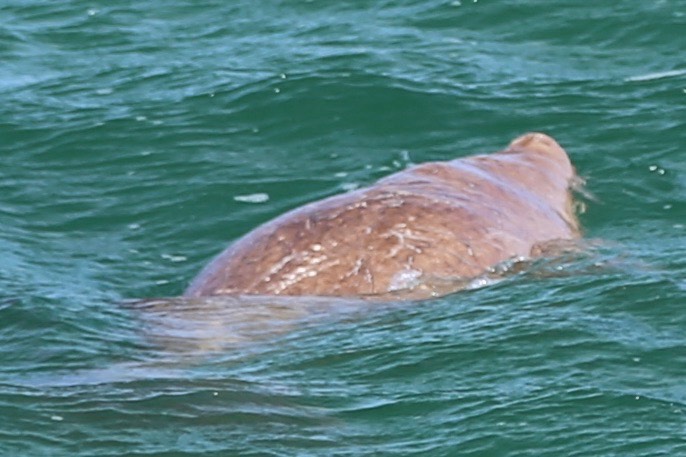
Shark Bay is not only a playground for a variety of sharks, but also for dolphins, turtles, rays, whales and dugongs. The dugongs in particular love this bay as the ocean floor is covered with their staple of sea grass. Because they can stay under water for up to 4 minutes, these gentle creatures or 'sea cows’, as they are sometimes called, are despite their size difficult to spot. .
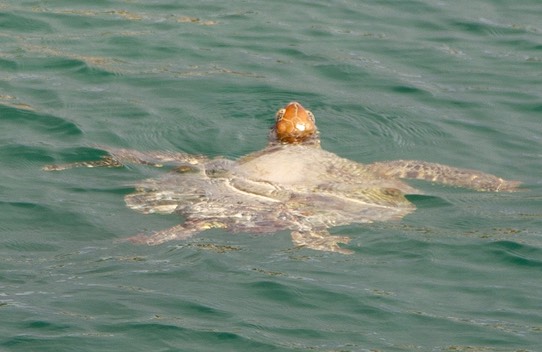
We took advantage of a half price offer and went out on a catamaran into their habitat. It took 2 hours until our captain having climbed half way up the mast finally spotted them, and although Austin had his finger on the trigger, it was extremely difficult to get a snapshot of the dugongs before they submerged again into the deep ocean.
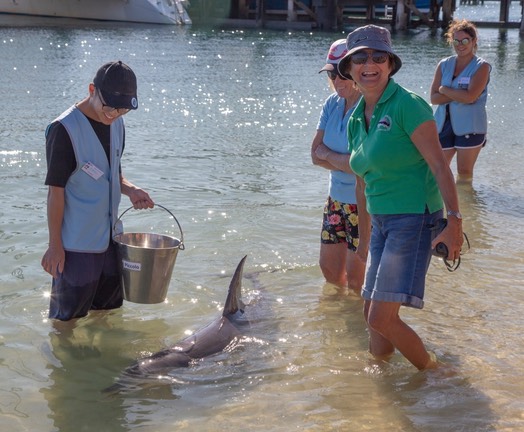
The dolphins at Monkey Mia were more accommodating. This area has been their home for generations and they hunt these waters by chasing the fish into the shallows close to the beach. Strict rules apply to human/dolphin interaction: no swimming with them, no touching of dolphins and always keeping a certain distance. Mind you, these rules are very one-sided. In spite of their excellent wide-angle eyesight the dolphins obviously haven’t read them. They swam right up to our legs and sometimes even in between them.
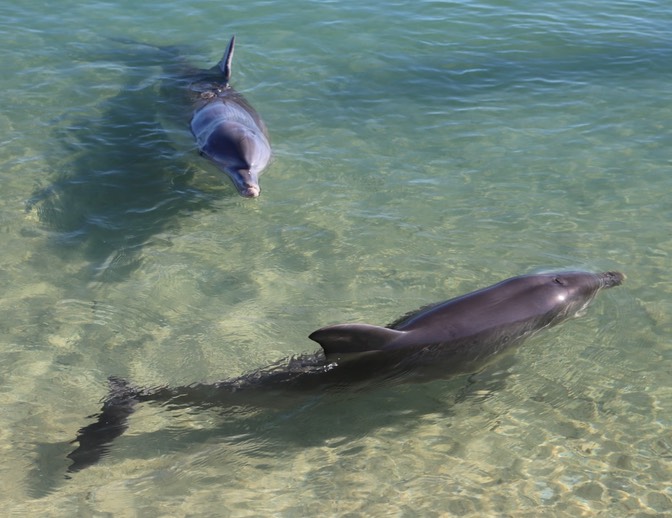
The rangers make sure that they are only fed 1/5 of their daily need by selecting 3 or 4 people to offer 1 fish each to a particular dolphin. This ensures that their natural hunting skills are maintained and passed on to their calves. I was lucky to have been chosen out of the crowd, and as soon as I lowered the fish into the water, Piccolo, the mother of little dolphin Pan, went for it.
It’s a bit sad, that little Pan has only half a tail. One fluke of his tail was bitten off by a shark, dispelling the myth "where there are dolphins there are no sharks". It was good though to see him swimming, diving and keeping up quite well with his mother.
The dolphins stuck around all day and even the odd turtle popped up its head in curiosity. What a magical place!
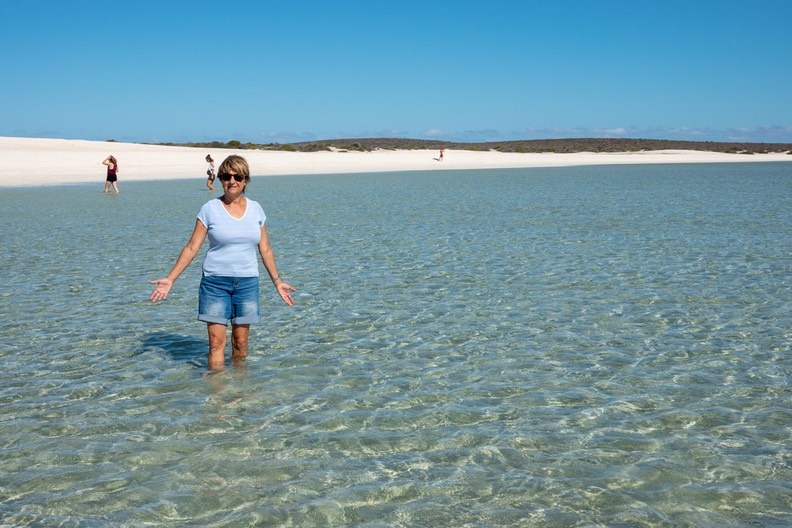
All of the bays, inlets and promontories here have something special to offer. Hamelin Pool is like the lake in Cervantes full of stromatolites, those 3 billion year old microbial mats of living bacteria which somehow managed to survive in the hyper saline environment!
Not far from there is Shell Beach, a very white, expansive beach consisting solely of fragum cockle shells. It’s wonderful to walk on this beach! The firm ground crunches under your feet and the fine shells give you a nice massage and foot scrub! The water, as you can see is crystal clear.
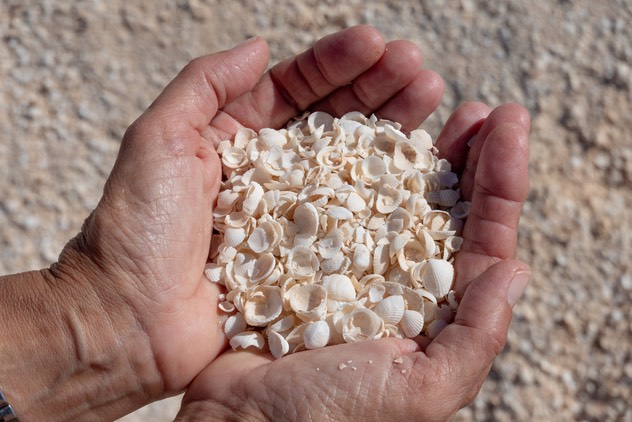
When we went out on the catamaran the other day we were lucky to have relatively little wind, but since then a strong Southerly has picked up and the sea is quite choppy.
With the wind blowing at 45 knots, Austin was spurred into "doing his thing” by helping a large sailing yacht to moor on the Denham Jetty. For a while there, holding onto the bow of the yacht against the current, it looked as if Austin’s body was hovering horizontally over the water, but he managed to recover both, the boat and his body!
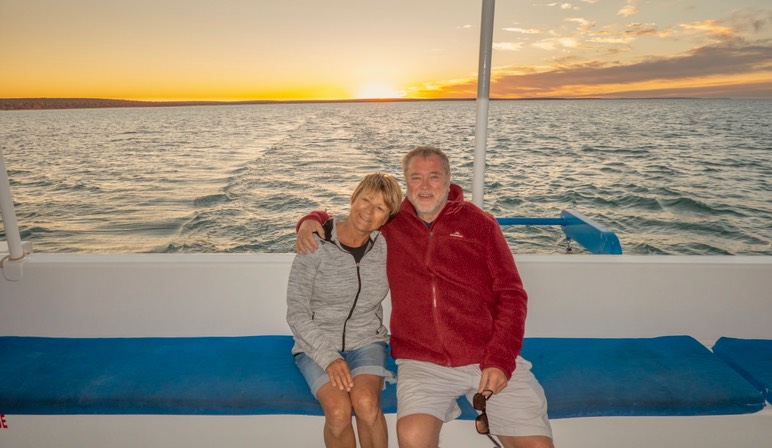
On our last night we climbed again on board of the catamaran Aristocrat II for our free sunset cruise which was included in the previous deal.
While sitting on the bow and sharing a glass of champagne with Martine and Russel from France, Melody, our skipper, sailed us smoothly around the bay and into the setting sun. Very romantic!
PS: It is unknown where the name “Monkey Mia” comes from, but in 1834 a ship called “Monkey” anchored in Shark Bay during a rescue mission and “Mia” is the aboriginal word for “home”.